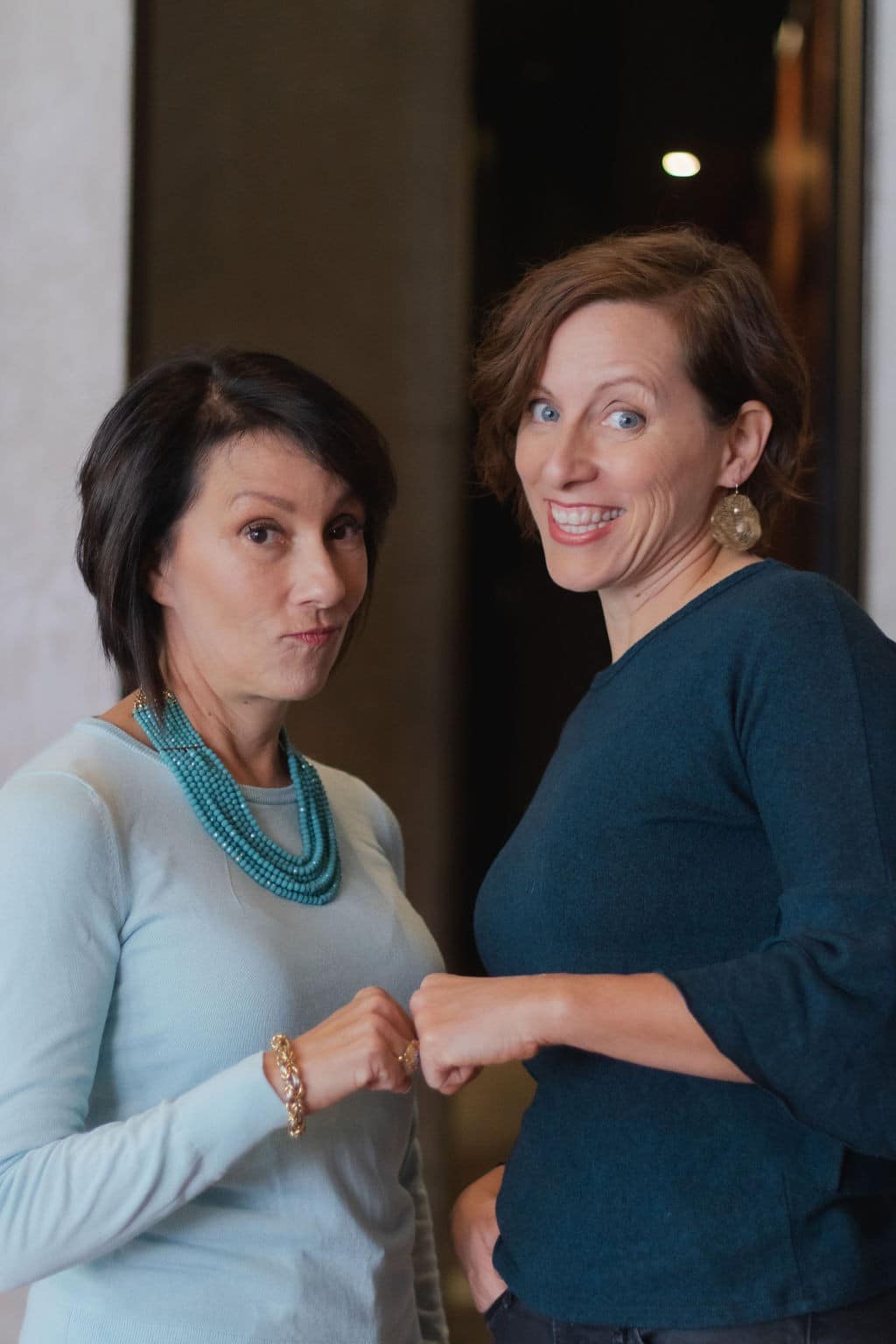Does anyone truly understand the value of trust? Probably not, unless you’ve had it broken and have had to try and regain that trust. It’s the same in business and companies literally cannot afford to break trust. To really shine a light on this, we want to share some information provided by the Strategy Competitive Agility Index. For those of you who are unfamiliar with it, this index measures competitiveness (growth, profitability, sustainability, and trust impact EBITDA). One of the most interesting findings is that a company’s bottom line can tank if teams, suppliers, or media lose trust in the brand, company, and the people behind it.
A slight 2% drop in trust can send an organization’s EBITDA plummeting by a staggering 9.8%. This isn’t a hypothetical scenario; it’s the eye-opening revelation from Accenture’s 2018 study. Proving that trust isn’t a vague ideal or simple buzzword. it’s a tangible force, driving both efficiency and financial success. Today we’ll focus on the core implications of losing trust. Then, discuss how you can avert these scenarios. And, most importantly, how you can boost team performance by adjusting your leadership style to foster trust.
Side note: You should also know this article is part of a four-piece series by Brilliant People‘s Founder & CEO Whitney Nelson, and the Director of Content & Communications, Brettnē Shootman. Check out the other content for complementary info:
How Performance Mirrors Trust
Believe it or not, trust quietly plays the role of the unsung hero in every software project. It’s the bond that glues teams together, sparks innovation, and in the end, leaves a positive mark on a business’s success.
We think Simon Sinek said it best: “Good people collaborate better with people they trust. After all, high performers with low trust can end up becoming toxic team members. And the natural leader that incentivizes the whole team to grow may, surprisingly, not be the most skilled professional for that specific task.”
Trust is the foundation upon which effective collaboration is built. Without trust, teams struggle to communicate openly and take risks. The absence of trust can lead to project delays, increased costs, and missed opportunities.
If you’re facing the challenge of reaching optimal ROI, look to boost collaboration in any way you can. There are usually three factors that negatively impact results. The good news is that they are easily identifiable:
- 1. Misunderstanding the scope: is the team doing the wrong things well?
- 2. Re-work and do-overs: how much time is wasted on bug-fixing instead of value delivery?
- 3. Misuse of time and resources: have you identified deviations in overtime, budget, and energy?
If so, building up the team is a possible solution. If leadership fosters trust and safe spaces, team members are encouraged to shift from toxic competition patterns toward more collaborative behaviors. They get to know each other well and establish equitable SLAs that result in better throughput. Another (often unexpected) side effect is that a respectful team tends to stress-test and optimize agreements and ideas to focus on effectiveness, not just efficiency.
3 Steps to Boost Trust
When it comes to building trust within teams, there’s a simple yet profound truth: “People differences trigger people problems.” This concept has been around since teamwork began, and it’s all about recognizing how diverse personalities can affect how we work together. The real gem here is knowing that having a mix of diverse minds isn’t just important; it’s downright invaluable. The key is learning to understand these ‘people differences’ so you can navigate through them.
Step 1: Open Honest Channels of Communication
In the trust-building process, both leaders and team members need to create a welcoming space for open and inclusive conversations. When we embrace diverse viewpoints and really listen to those with different perspectives, we set the stage for more meaningful discussions and smarter decision-making. Leaders, in particular, have a vital role to play as torchbearers of open and respectful dialogue.
You might be wondering, how exactly can leaders set the example? Well, it all points back to understanding and empathy. Leaders can kick off this journey by
- Organizing sessions aimed at uncovering the unique aspects of each team member’s personality.
- Helping shed light on how others perceive us and why we act the way we do.
It’s an important initial step in building genuine connections.
Step 2: Reframe Failure as Opportunity
Going beyond just understanding, leaders must learn to shift their perspective on mistakes and failures. It’s all about leaving behind the idea that failure is negative and instead welcoming it as a chance to learn and grow. This change in mindset not only encourages an environment of innovation but also builds trust by showing that making mistakes is a normal part of moving forward.
Step 3: Embrace Diversity as a Strength
It’s not merely a matter of checking off boxes on a diversity checklist – it’s about appreciating the incredible power that diverse personalities bring to the team. Let’s be honest, the workplace is usually a melting pot of differences. It’s important to realize that this diversity is actually a good thing. In fact, about three-quarters of your coworkers are likely to be quite different from you, and that shouldn’t be a problem – it’s a bonus! A strong team is like a puzzle where each person fills in the gaps of the others.
You see, building trust isn’t about making everyone the same. It’s about celebrating those differences and tapping into their strength, making sure that everyone’s voice counts, no matter their background or perspective.
Leaders pave the way here by recognizing that nobody’s perfect, and teamwork is all about the synergy that happens when unique personalities come together. It’s like turning those differences into superpowers that boost productivity and help the team move forward together. That’s how you create a culture where trust thrives and teams shine.
Avoiding Bumps in the Road When Building Trust
Building trust is a fantastic goal, but it’s not all smooth sailing. There are potential bumps in the road to watch out for. Here are 4 common issues organizations should keep in mind when they’re working on the trust-building process.
Mistake #1: Not Owning Up to Leadership’s Role in Embracing Conflict and Curiosity
Conflict isn’t necessarily a bad thing – it’s actually a chance to make better decisions. Leaders should encourage their teams to see conflict as a healthy conversation, not a battle. This mindset shift ensures that team members feel safe to share different viewpoints without repercussions. Leaders must make it clear that challenging the status quo and looking at problems from different angles is a great thing. It’s not just about making better decisions; it’s about showing that every perspective is valuable.
Mistake #2: The One-and-Done Myth
One big pitfall is thinking that trust-building is a one-and-done deal. Some organizations believe that a single training session or workshop can magically solve their trust issues. They invest in these sessions, hoping for instant results. But here’s the truth: trust is a journey, not a destination. It’s like tending to a garden; it needs continuous care and commitment over time. You can’t rush it in a day – it grows gradually. And the more care and attention you pay to helping it evolve, the more it will produce.
Mistake #3: Not Leaving Room for Peer-to-Peer Accountability
One trap to avoid is relying too much on managers to keep everyone in line. Building trust means that teams take responsibility for their actions and outcomes, not just waiting for the manager to step in. Peer-to-peer accountability is key here. Team members should commit to supporting each other and tackling issues together. Trust erodes quickly if members just rely on the higher-ups to step in and solve problems.
Mistake #4: Not Adapting to a Changing Culture
Company culture isn’t set in stone. It evolves as new people come in, others leave, and roles shift. Change is inevitable, and that means we need to pay attention to keeping the trust-building process going. We’ve got to make an effort to get to know new team members and encourage interactions, especially when we’re working with remote team members from all over the world.
Cultivating Trust Over Time: It’s a Journey, Not a Destination
This can’t be stressed enough – assuming that one trust-building session will create lasting change is a common mistake. Even if some team members have undergone training or workshops, the insights they gain need to be kept alive over time. Teams should make trust-building an ongoing discussion by regularly taking time in meetings to discuss challenges, successes, and lessons learned.
#1 It’s Important to Speak Everyone’s Language
Remember that a one-size-fits-all communication style doesn’t work, especially in diverse teams. If you speak in a way that only connects with a specific group, you risk losing credibility with the others. Effective communication takes into account the audience, delivering information in various ways that resonate with everyone involved. Here are some key things to remember:
#2 The Power of Co-location / In-person Time
While remote work may be the new norm, there’s still something special about bringing distributed teams together in person, every once in a while. Human connection is irreplaceable, and during those face-to-face moments, teams can truly feel each other’s vibes. Sharing personal stories and experiences can create empathy and camaraderie, nurturing trust in deep and meaningful ways.
#3 Trust and Empathy Go Beyond the 9-to-5
The benefits of trust-building don’t stop when laptops are closed. Team members who gain insights into each other’s personalities and behaviors often find that this newfound understanding also enriches their personal lives. It’s like a ripple effect where better relationships spill over from the workplace.
Trust: The Heartbeat of Success
Trust is the secret ingredient that keeps teams effective and organizations thriving, and it needs constant care. Whether it’s adapting to remote work, understanding diverse personalities, or promoting open communication, the journey to build and keep trust is a multi-faceted one. It’s about celebrating differences, embracing empathy, and creating an environment where every voice is cherished.
Trust-building is an ongoing dialogue that requires commitment and a touch of creativity. By recognizing the power of personal connections, sustaining the conversation, and spreading the goodness of trust beyond the workplace, organizations can make sure that trust stays at the core of their teams’ success. It drives collaboration, sparks innovation, and fuels growth.
Talk to Ubiminds’ consultants to learn more about how your SaaS team can benefit from Brilliant People™’s services.

Brettnē began her career in public education; teaching students, writing district-wide curriculum, and facilitating Covey training for educators. She has since created curriculum for private schools and nonprofits.
Whitney Nelson is the founder and CEO of Brilliant People™. She’s a dynamic leader with a background in design, marketing, leading teams and leadership development.





